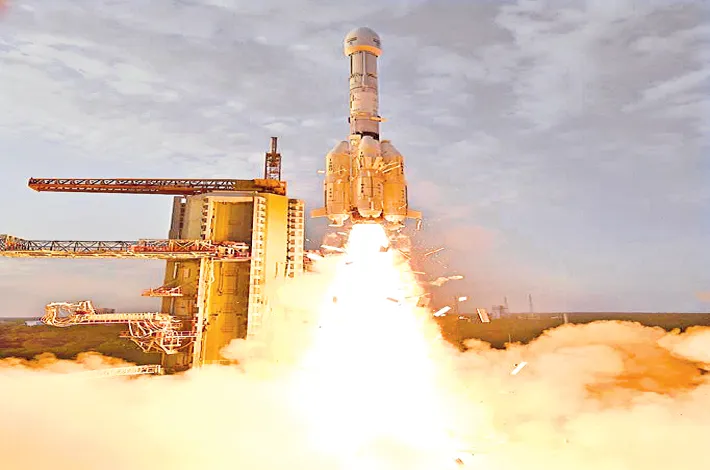ISRO successfully launches NISAR imaging satellite
31-07-2025 12:00:00 AM

metro india news I sriharikota
The world's most expensive civilian Earth imaging satellite, NISAR (NASA-ISRO Synthetic Aperture Radar Satellite), has lifted off from Sriharikota in Andhra Pradesh and has been successfully injected into its orbit.
The Geosynchronous Satellite Launch Vehicle GSLV-F16 rocket carrying the $1.3-billion satellite, which is a collaboration between Indian space agency ISRO and its US counterpart NASA, lifted off at 5.40 pm on Wednesday. This is the first such collaboration between the two space agencies.
"Liftoff. And we have liftoff! GSLV-F16 has successfully launched with NISAR onboard," ISRO's handle posted on X. Speaking to NDTV earlier, ISRO Chairman Dr V Narayanan said the launch would be a big step forward in India assuming a leadership role in satellite technology.
"From that humble beginning (the launch of India's first satellite, Aryabhata, with Russia's support, in 1975) when India relied on other nations for satellite technology, we are now gradually occupying a leadership role... Today, two great countries have built an important satellite together, and I'm extremely happy that it will be launched by our vehicle from Indian soil," Mr Narayanan said.
After the launch, the ISRO chairman said, "I am extremely happy. NISAR has been successfully and precisely injected into its intended orbit." NISAR, which weights 2,392 kg, will be injected into a Sun Synchronous Polar Orbit - the first time a GSLV is doing so. Usually, PSLVs (Polar Satellite Launch Vehicles) are used to inject satellites into such orbits.
The satellite, which has been in development for over a decade and is expected to have a mission life of five years, will orbit the Earth once every 97 minutes and send images of Earth's land surface, as well as some portions of the ocean's surface, every 12 days. The unique Earth imaging satellite is a technological marvel and would be a game-changer in saving lives by being able to predict natural disasters and give warnings. Its dual-band radar - L-band from NASA and S-band from ISRO - will allow scientists to monitor the Earth with unprecedented precision.








